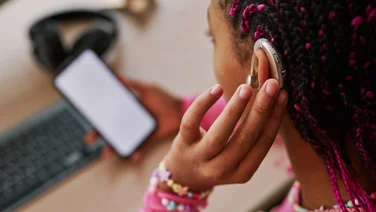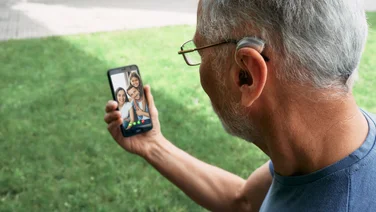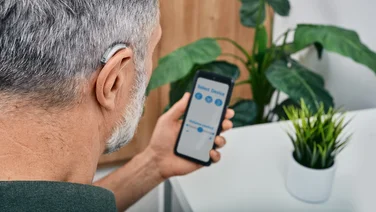To help us provide you with free impartial advice, we may earn a commission if you buy through links on our site. Learn more

Taking the time to learn how to properly clean your hearing aids, including hearing aid batteries, will help keep them in optimum condition for longer, which is vital given how expensive a good hearing aid can be.
Hearing aids are worn for 8-16 hours a day in environments that are warm and moist – famously not ideal when it comes to technology. In order to prevent ear infections and ensure your hearing aids are kept in tip-top condition (with packages starting at £500 and going upwards of £3,000 these are not devices you’ll want to be replacing frequently) regular and careful cleaning must be undertaken.
READ NEXT: How do hearing aids work?
Exactly what cleaning regime should be adhered to will be set out by the manufacturer of your specific device, along with a roster of tools to help you get there, so be sure to check the instructions. However, we’ve collated some general rules of thumb when tackling the task of cleaning your hearing aids.
If you have an idea of your the ideal type for you, use our free quote finder tool to be matched to a local hearing aid specalist.
Get a free hearing aid quote today
If you’d like to know how much hearing aids could cost you, take our quick survey below and we’ll provide you with a quote that matches your exact requirements.
READ NEXT: How much do hearing aids cost?
How to clean hearing aids: Things to avoid
The first thing to do is to avoid submerging your hearing aids in water – while most hearing aids are water resistant, they’re not fully waterproof. Don’t dunk your devices in warm soapy water, much like you wouldn’t a smartwatch or smartphone. (Some BTE hearing aid suppliers recommend you remove the tubing from the earpiece/earmold and soak it once a week to give it a thorough clean – but always check the instructions for confirmation of this.)
It can also be tempting to use a sharp object like a needle or drawing pin to clear away grime from the device when you don’t have your cleaning kit to hand – avoid doing this as these items can cause damage to the hearing aids. The same goes for alcohol- or chemical-based wipes: they may seem like an easy-to-use hack, but can damage the intricate innards of your sophisticated little devices.
Are you interested in how much hearing aids could cost?
Find the best provider for you
How to clean hearing aids: Step-by-step
Once you’ve swerved these fatal errors, it’s best practice to start off by making sure your hands are clean and dry. Your hands can amass considerable grime and bacteria throughout the day – things you definitely don’t want transferred to your ear canals – so avoid a counterproductive cleaning session by giving your mitts a good scrub before starting.
The best way to begin cleaning your hearing aids is to use the soft brush or dry cloth provided to remove any excess wax or dirt from the body and exterior of the device. Do this with the device facing down, so loose particles will fall away from the device. “The key to cleaning and maintaining your hearing aids is daily management,” explains audiologist Dr Ruth Reisman. “This will include running over the microphones and the receivers with either the hearing aid brush provided in your kit or a soft toothbrush to make sure that there is minimal wax and debris build up.”
Users will often be provided with a wax pick or wax loop, which should then be used to clear earwax from the opening of the hearing aid and any harder-to-reach nooks and crannies of the device.
To finish, wipe the exterior of the hearing aid and their case with a clean and dry tissue or cloth, removing any grime that may have become dislodged during the cleaning process.
As ever, some devices may require professional care and attention: Dr Reisman recommends following up with a hearing care professional every six months to check the integrity of the hearing aid. Some manufacturers recommend professional cleaning at certain intervals of a hearing aid’s life, to vacuum out hard-to-reach particles and ensure the longevity of your device. Make sure you adhere to these recommendations, and of course seek professional assistance if your hearing aid stops working properly at any point.






